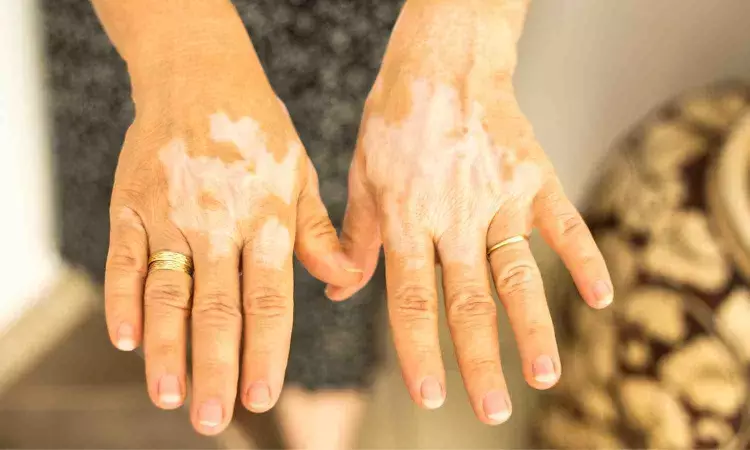- Home
- Medical news & Guidelines
- Anesthesiology
- Cardiology and CTVS
- Critical Care
- Dentistry
- Dermatology
- Diabetes and Endocrinology
- ENT
- Gastroenterology
- Medicine
- Nephrology
- Neurology
- Obstretics-Gynaecology
- Oncology
- Ophthalmology
- Orthopaedics
- Pediatrics-Neonatology
- Psychiatry
- Pulmonology
- Radiology
- Surgery
- Urology
- Laboratory Medicine
- Diet
- Nursing
- Paramedical
- Physiotherapy
- Health news
- Fact Check
- Bone Health Fact Check
- Brain Health Fact Check
- Cancer Related Fact Check
- Child Care Fact Check
- Dental and oral health fact check
- Diabetes and metabolic health fact check
- Diet and Nutrition Fact Check
- Eye and ENT Care Fact Check
- Fitness fact check
- Gut health fact check
- Heart health fact check
- Kidney health fact check
- Medical education fact check
- Men's health fact check
- Respiratory fact check
- Skin and hair care fact check
- Vaccine and Immunization fact check
- Women's health fact check
- AYUSH
- State News
- Andaman and Nicobar Islands
- Andhra Pradesh
- Arunachal Pradesh
- Assam
- Bihar
- Chandigarh
- Chattisgarh
- Dadra and Nagar Haveli
- Daman and Diu
- Delhi
- Goa
- Gujarat
- Haryana
- Himachal Pradesh
- Jammu & Kashmir
- Jharkhand
- Karnataka
- Kerala
- Ladakh
- Lakshadweep
- Madhya Pradesh
- Maharashtra
- Manipur
- Meghalaya
- Mizoram
- Nagaland
- Odisha
- Puducherry
- Punjab
- Rajasthan
- Sikkim
- Tamil Nadu
- Telangana
- Tripura
- Uttar Pradesh
- Uttrakhand
- West Bengal
- Medical Education
- Industry
Vitiligo Causally Linked to Rheumatoid Arthritis, Type 1 Diabetes, and Alopecia Areata: Study

A new study published in the Journal of Cosmetic Dermatology has found that vitiligo has a direct causal relationship with a number of autoimmune diseases, most notably rheumatoid arthritis (RA), type 1 diabetes mellitus (T1DM), and alopecia areata (AA). Applying novel genetic analysis, this research provides strong evidence of a bidirectional causal relationship between vitiligo and RA, in addition to declaring vitiligo to be a causal agent in the onset of T1DM and AA. These results redefine existing knowledge of the autoimmune environment and propose common biological mechanisms that might inform future diagnosis and treatment protocols. The study was conducted by Jiangfeng and colleagues.
Vitiligo, a depigmenting skin condition caused by melanocyte loss, has been long suspected to be associated with autoimmune disease but has proven elusive to establish as having a direct causal link given confounding and reverse causality. To overcome the above limitations, the researchers utilized Mendelian randomization (MR), a methodology that utilizes genetic variants as surrogates to ascertain causality between traits, to investigate the relationships between vitiligo and six common autoimmune diseases such as systemic lupus erythematosus, Graves' disease, inflammatory bowel disease, AA, T1DM, and RA.
Bidirectional two-sample MR analyses were applied in the study to examine possible bidirectional causal relationships between vitiligo and all the autoimmune diseases. SMR and colocalization tests were further applied to detect common genetic loci that would account for the shared risks. The genetic method generated strong evidence without the common bias present in observational investigations.
Key Findings
• Bidirectional Causality Between Vitiligo and RA
• RA raises the risk of vitiligo: IVW OR = 1.19, 95% CI: 1.05–1.13, p = 0.008
• Vitiligo raises the risk of RA: IVW OR = 1.08, 95% CI: 1.03–1.13, p < 0.001
Vitiligo raises the risk of other autoimmune diseases:
• Alopecia Areata (AA): IVW OR = 1.14, 95% CI: 1.04–1.26, p = 0.008
• Type 1 Diabetes Mellitus (T1DM): IVW OR = 1.14, 95% CI: 1.06–1.23, p < 0.001
Genetic loci shared:
SMR and colocalization tests identified three shared genes between RA and vitiligo:
•FCRL3 (Fc Receptor-Like 3)
• FADS1 (Fatty Acid Desaturase 1)
• FADS2 (Fatty Acid Desaturase 2)
These could potentially function as future therapeutic or diagnostic targets, indicating a common autoimmune mechanism.
This study presents genetic evidence that vitiligo is causally linked with RA, T1DM, and AA, with reciprocal risk elevation particularly between vitiligo and RA. Shared susceptibility genes also strengthen the notion of shared autoimmune mechanisms and provide a new area for multi-disease treatment and drug development.
Reference:
Huang, J., Jiang, L., Hu, Y., Fu, C., Zhang, K., Wen, Y., Zhou, S., Huang, J., Chen, J., & Zeng, Q. (2025). Association of vitiligo with autoimmune disorders: A bidirectional two‐sample and summary‐based Mendelian randomization study. Journal of Cosmetic Dermatology, 24(6). https://doi.org/10.1111/jocd.70211
Dr Riya Dave has completed dentistry from Gujarat University in 2022. She is a dentist and accomplished medical and scientific writer known for her commitment to bridging the gap between clinical expertise and accessible healthcare information. She has been actively involved in writing blogs related to health and wellness.
Dr Kamal Kant Kohli-MBBS, DTCD- a chest specialist with more than 30 years of practice and a flair for writing clinical articles, Dr Kamal Kant Kohli joined Medical Dialogues as a Chief Editor of Medical News. Besides writing articles, as an editor, he proofreads and verifies all the medical content published on Medical Dialogues including those coming from journals, studies,medical conferences,guidelines etc. Email: drkohli@medicaldialogues.in. Contact no. 011-43720751


